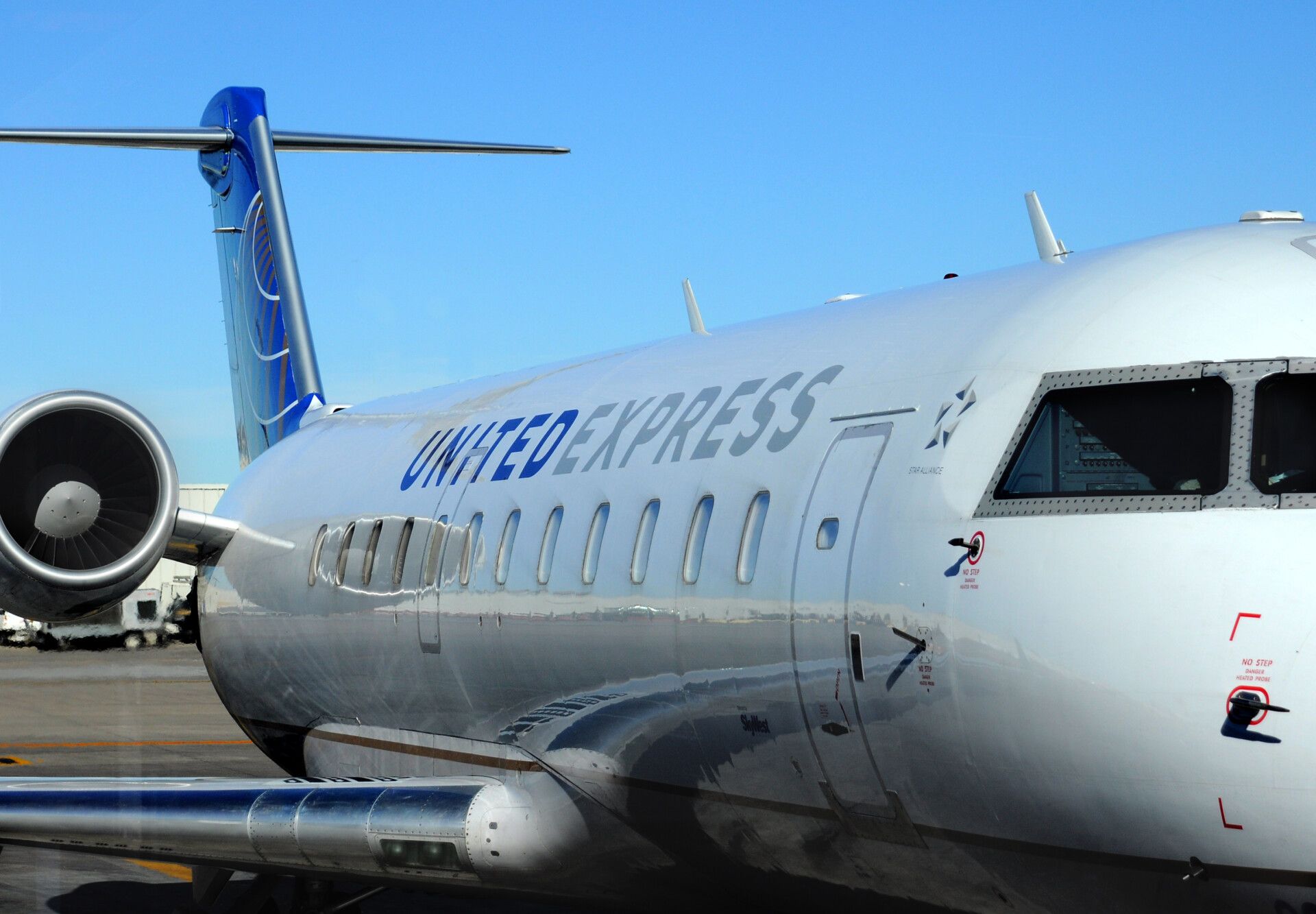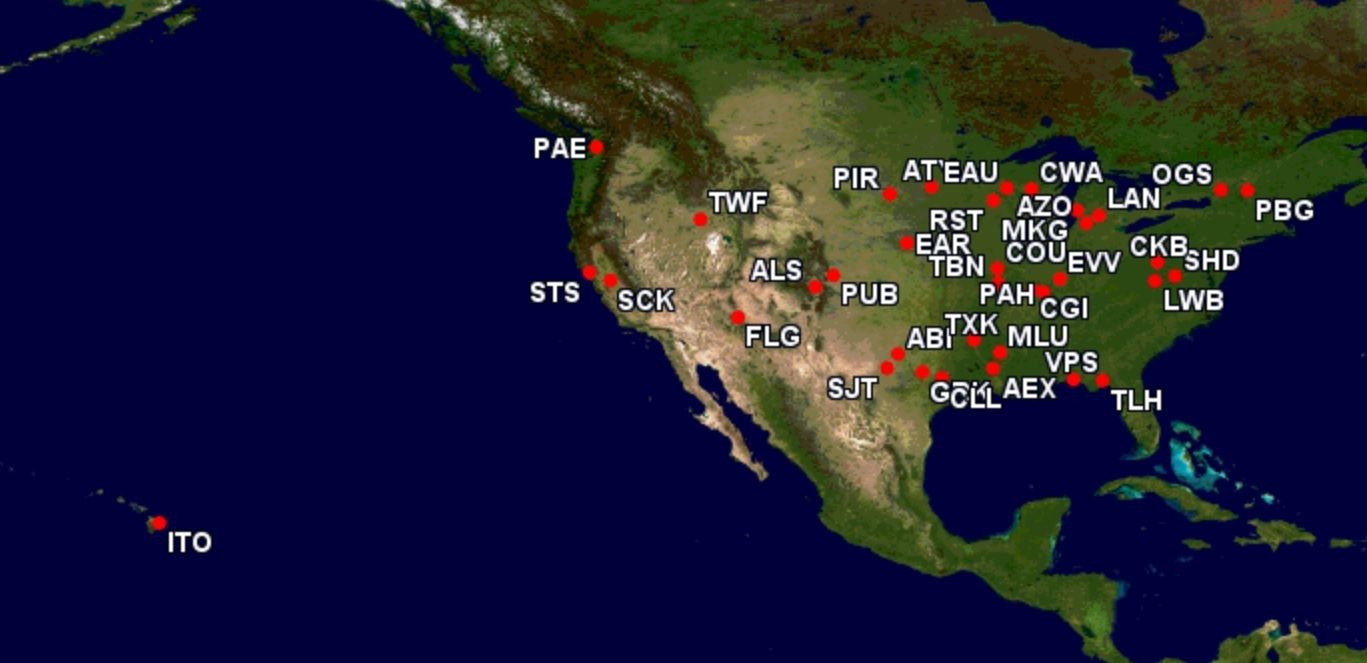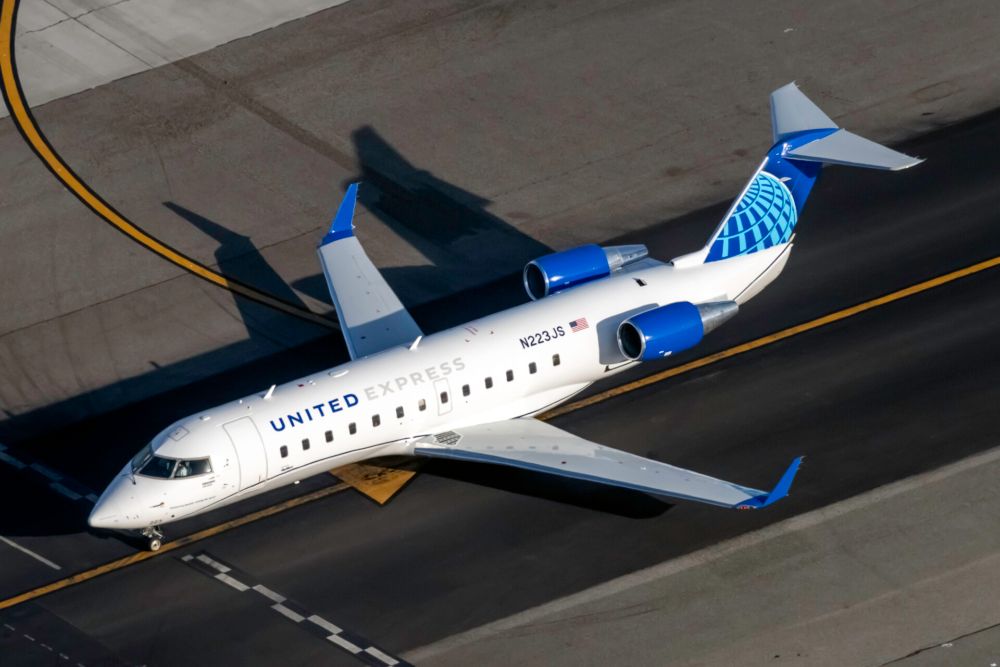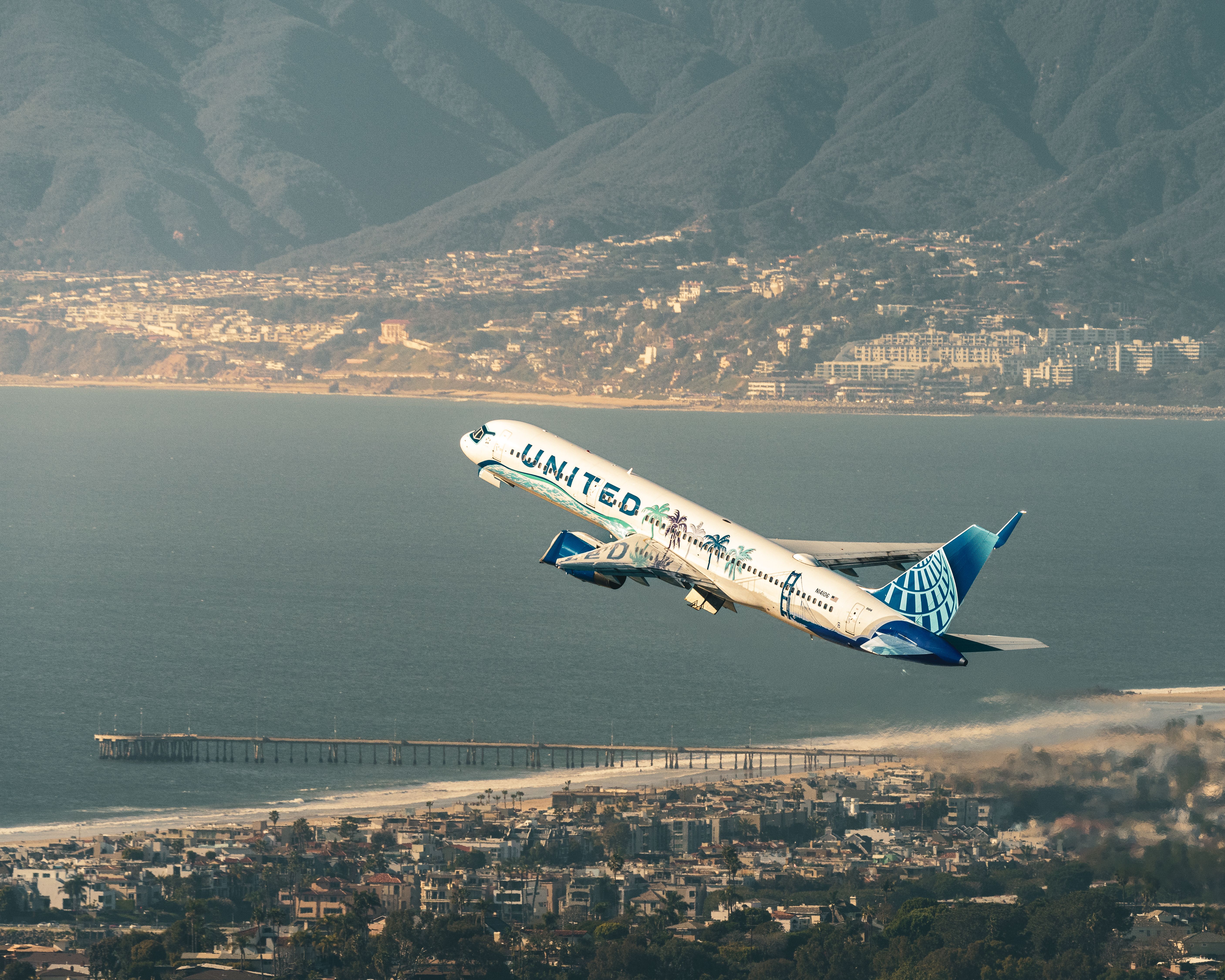Small airports serving (usually) small communities have been badly hit since the pandemic struck. United alone has ended service to 36, most recently Pueblo, Colorado, as first reported by The Points Guy. The cuts greatly contrast with United's historic aircraft order placed on December 13th. Of course, most of the 36 airports will still be served by other carriers, and particular routes will remain operated on an Essential Air Service (EAS) basis, just by a different operator.
United has mainly cut the airports because of the ongoing pilot shortage and parked regional aircraft. Many airports were served by single-class, 50-seater regional jets, which are increasingly being withdrawn, and can't sustain multi-class, larger RJs, with their much better economics. Some airports were only recently added to the network.
The 36 airports United has cut
The map below shows all 36 airports that no longer see United or soon won't, while the following list identifies them by state. Airports in 21 states are affected. United has cut four airports in Texas, three in Michigan, and three in Missouri.
Missouri includes Fort Leonard Wood. United launched service from Chicago O'Hare, 369 miles (593km) away, in October last year; it ended 12 months later. Not surprisingly, it used single-class, all-economy CRJ-200s. Some flights routed O'Hare-Decatur-Fort Leonard Wood and vice-versa.
- Arizona: Flagstaff (FLG)
- Arkansas: Texarkana (TXK)
- California: Santa Rosa (STS), Stockton (SCK)
- Colorado: Alamosa (ALS), Pueblo (PUB; see below)
- Florida: Destin-Fort Walton Beach (VPS), Tallahassee (TLH)
- Hawaii: Hilo (ITO)
- Idaho: Twin Falls (TWF)
- Indiana: Evansville (EVV)
- Kentucky: Paducah (PAH)
- Louisiana: Alexandria (AEX), Monroe (MLU)
- Michigan: Kalamazoo (AZO), Lansing (LAN), Muskegon (MKG)
- Minnesota: Rochester (RST)
- Missouri: Cape Girardeau (CGI), Columbia (COU), Fort Leonard Wood (TBN)
- Nebraska: Kearney (EAR)
- New York: Ogdensburg (OGS), Plattsburgh (PBG)
- South Dakota: Pierre (PIR), Watertown (ATY)
- Texas: Abilene (ABI), College Station (CLL), Killeen (GRK), San Angelo (SJT)
- Virginia: Staunton/Waynesboro (SHD)
- Washington: Everett (PAE)
- West Virginia: Clarksburg (CKB), Lewisburg (LWB)
- Wisconsin: Eau Claire (EAU), Wausau (CWA)
Stay aware: Sign up for my weekly new routes newsletter.
United cuts Denver-Pueblo
United's most recent cut is Pueblo, Colorado, the state's ninth-largest city with around 112,000 people. It served Pueblo from Denver, just 109 miles (175km) away, using SkyWest's 50-seat, single-class CRJ-200s. According to the US Department of Transportation, it was subsidized by $2,784,664 a year by the EAS to operate 12 weekly flights, equivalent to $44 in funding per seat each way.
Using RJs, the route takes about 30 minutes to fly and is served up to 2 daily. The DOT shows that, in 2019, United carried 26,007 passengers on the route, with a very low 43% seat load factor (SLF), obviously offset by the funding. In 2020, there were 11,272 passengers (20%), some 17,668 (29%) in 2021, and in the first seven months of 2022, 9,885 (29%).
Discover more aviation news.
Southern Express is coming
United ends Denver-Pubeo on January 14th, and Southern Express starts it on the 15th. Obviously, Southern Express will also be financially subsidized by EAS, designed to help ensure the community has specific routes that no airline would otherwise serve as it wouldn't be financially viable. In Pueblo's case, they'd be forced to drive the roughly two hours to Denver.
According to the DOT, Southern Express will receive $2,992,087 for the first year and $3,066,890 for the second, with the contract to end in January 2025. For this, it'll fly 24 weekly with nine-seat King Airs, quite a change from 50-seat RJs. In the two years, it'll get $135 per seat each way.
Unlike United, which offers Pueblo residents and visitors its expansive network over Denver, Southern Express will be dependent on point-to-point travelers, self-connectors, and those who use Google Flights or similar to book combined itineraries.
Have you been affected by any of the cuts/changes? If so, let us know in the comments.
Source: The Points Guy.




